Attorney client letter template
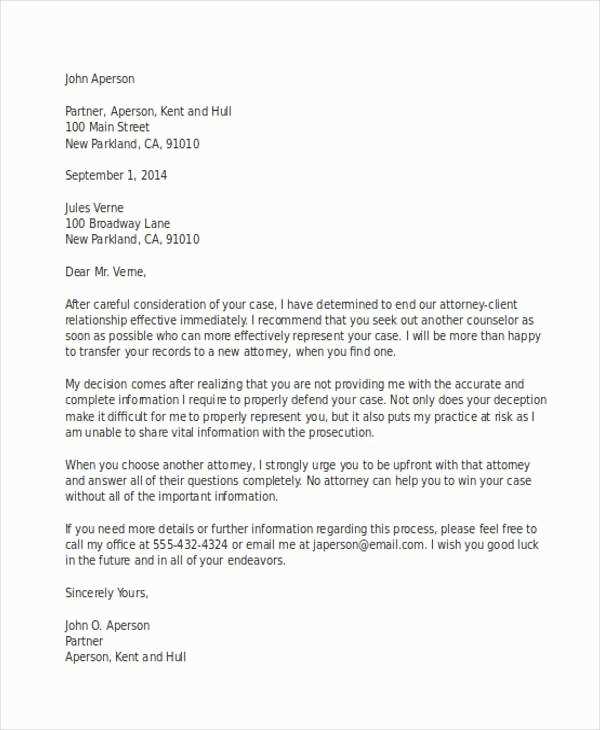
To begin with, ensure your letter is clear, concise, and structured. Start by addressing the client directly with their full name, and reference the specific matter at hand. This approach immediately establishes a personal connection and focuses on the purpose of the letter.
Next, outline the facts or legal situation the client is involved in. Provide a straightforward summary, offering your professional perspective without unnecessary complexity. Keep the tone professional but approachable.
Following this, include your advice or recommendations. Be direct about the actions the client needs to take, highlighting any relevant deadlines or considerations. If applicable, outline any steps you will be taking on their behalf, ensuring transparency about your role.
Lastly, close the letter by inviting further communication. Reassure the client that you are available for any questions or clarifications. This will foster a sense of reliability and openness, encouraging an ongoing dialogue.
Attorney Client Letter Template
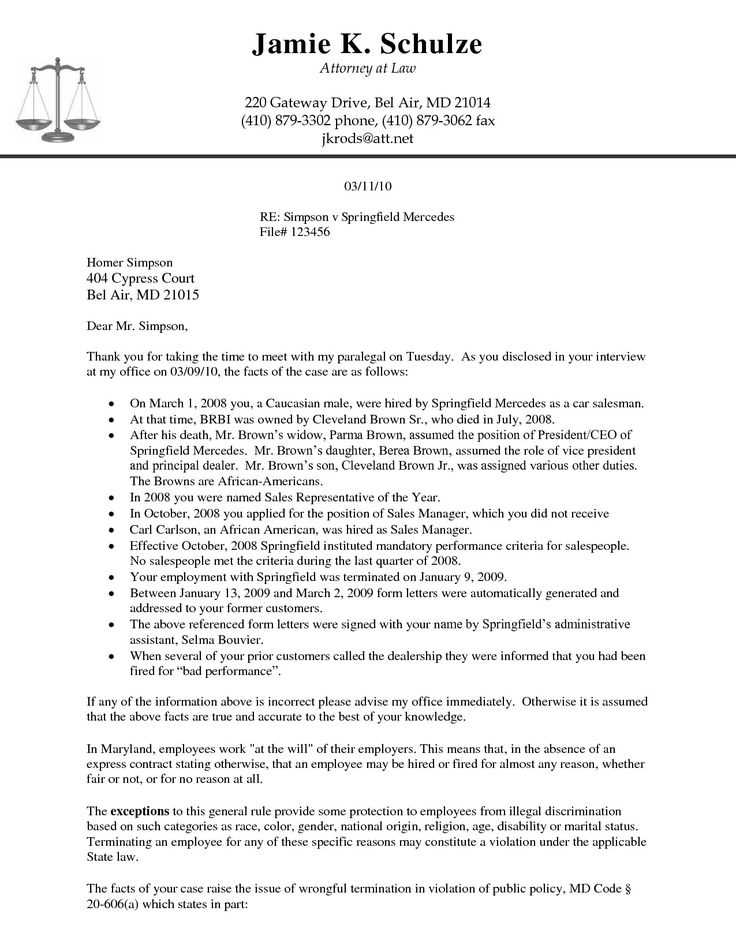
A well-structured attorney client letter should clearly outline key information and maintain professionalism. Begin with a formal greeting, addressing the client by name. Specify the purpose of the letter and the details of the legal matter at hand. Ensure the language is direct and concise, avoiding any ambiguity.
The letter should include the following sections:
- Introduction: A brief statement acknowledging the relationship between the attorney and client, along with the purpose of the correspondence.
- Details of the Matter: A clear description of the legal issue being addressed, with relevant facts and timelines. Be specific and avoid unnecessary legal jargon.
- Action Plan: Outline any recommended actions for the client, including the next steps or legal options available. Provide a timeline for any necessary decisions.
- Fees and Costs: Clearly outline the attorney’s fees, payment terms, and any additional costs that may arise during the process.
- Conclusion: A professional closing statement, thanking the client for their trust and offering further assistance. Include contact information for follow-up.
Keep the tone respectful and direct, ensuring that the client understands their rights and responsibilities. Always ensure the content is clear, addressing any potential questions or concerns upfront.
How to Start an Attorney-Client Letter
Open with a clear statement of the purpose of the letter. Address the client directly and explain the reason for the correspondence. For example, begin by confirming the topic or matter at hand, such as “I am writing to update you on the progress of your case” or “This letter is to clarify the next steps in your legal matter.” Make sure the tone is professional and straightforward. If necessary, include a brief reference to any previous communication to provide context.
After that, clearly state your role and responsibilities in relation to the matter. If the client has recently engaged your services, acknowledge the relationship and express your commitment to their case. You might say, “As your legal counsel, I will ensure that all necessary steps are taken to protect your interests.” This assures the client that their case is in capable hands.
Key Elements to Include in the Body
Begin with a clear and concise statement of the purpose of the letter. Directly address the reason for the communication, whether it’s about providing legal advice, confirming terms, or requesting specific actions. Keep the tone direct and focused on the matter at hand.
Case Summary or Issue Overview
Provide a brief summary of the facts or issues relevant to the case. Be specific about the key details that the client needs to understand. Avoid unnecessary background information that doesn’t directly impact the client’s current concerns.
Legal Analysis or Advice
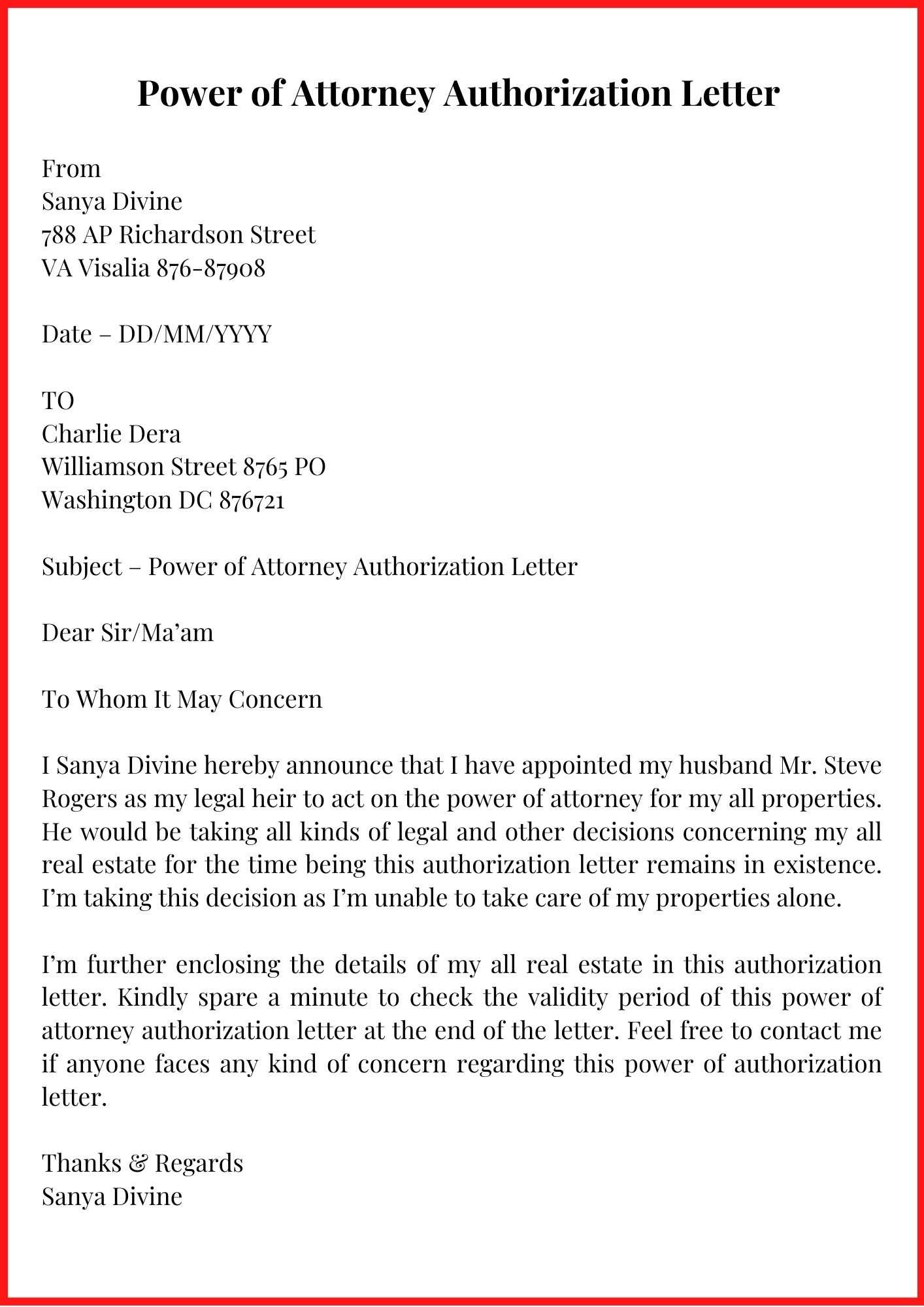
Include your legal analysis, explaining the implications of the client’s situation. Offer clear guidance and potential actions the client should consider. Ensure that your advice is precise and actionable, avoiding ambiguity to help the client make informed decisions.
Conclude with any follow-up steps or instructions for the client. Clearly outline what you expect from them next, including deadlines or actions they must take. This ensures that both parties are on the same page moving forward.
Maintaining a Professional Tone in Legal Correspondence
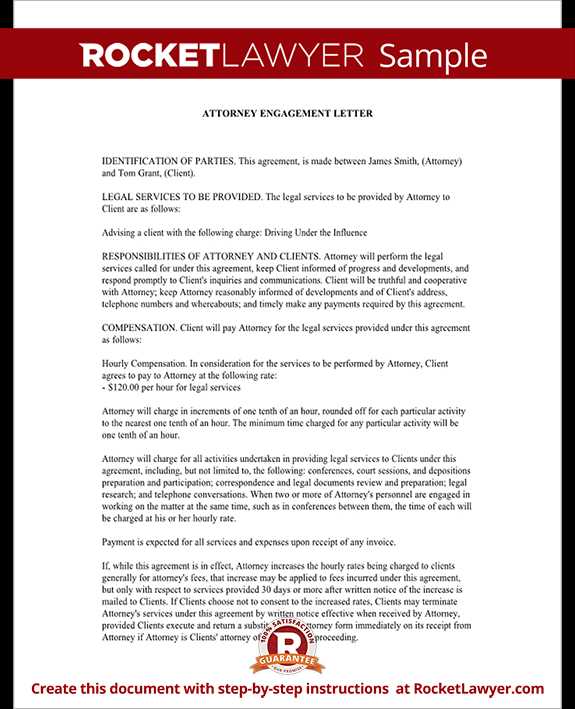
Use clear and concise language. Avoid unnecessary jargon or overly complex terms that could confuse the reader. Ensure that your message is straightforward and free of ambiguity.
Stay respectful and neutral. Refrain from using emotional language, sarcasm, or personal comments. Legal correspondence should always maintain a sense of professionalism, even if the topic is contentious.
Structure your letters logically. Begin with a clear subject line and an introductory paragraph that summarizes the purpose of the letter. Break the content into easily digestible sections, using bullet points or numbered lists to organize key points.
- Use formal language. Avoid contractions such as “don’t” or “can’t.” Instead, write “do not” and “cannot.”
- Address the recipient appropriately. If possible, use the person’s formal title and last name.
- Be precise with your statements. Avoid generalizations and vague references to facts or legal issues.
Double-check for errors. Grammatical mistakes or typos can undermine the professionalism of your letter. Take time to proofread your correspondence before sending it out.
Consider the tone in your closing. End with a polite sign-off, such as “Yours sincerely” or “Kind regards,” followed by your full name and title. This leaves a positive impression while maintaining professionalism.
Clarifying Legal Terms and Jargon for Clients
Use simple and straightforward language to explain legal concepts. Instead of legal jargon, offer clear definitions and examples that apply directly to your client’s case. For instance, rather than referring to “indemnity clauses,” explain that it means a party agrees to cover certain costs or damages.
Always break down complex phrases. If you use terms like “liquidated damages,” provide a brief explanation like: “This is a predetermined amount agreed upon in advance to cover potential losses.” This helps clients better grasp the significance of their contracts without feeling overwhelmed by technical terms.
Encourage clients to ask for clarification when they don’t understand something. Let them know that it’s perfectly fine to request simpler terms or rewording of legal language. This approach builds trust and ensures they fully comprehend the content and implications of legal documents.
Using analogies can be effective when explaining concepts. For example, comparing a “breach of contract” to “failing to keep a promise” helps make the concept more relatable. This technique makes legal language accessible and understandable.
Before sending any documents, make sure the key terms are defined clearly and highlighted. Consider creating a glossary if the document contains several legal terms. This will be a useful reference for your clients as they review their agreements.
How to End the Letter: Call to Action and Next Steps
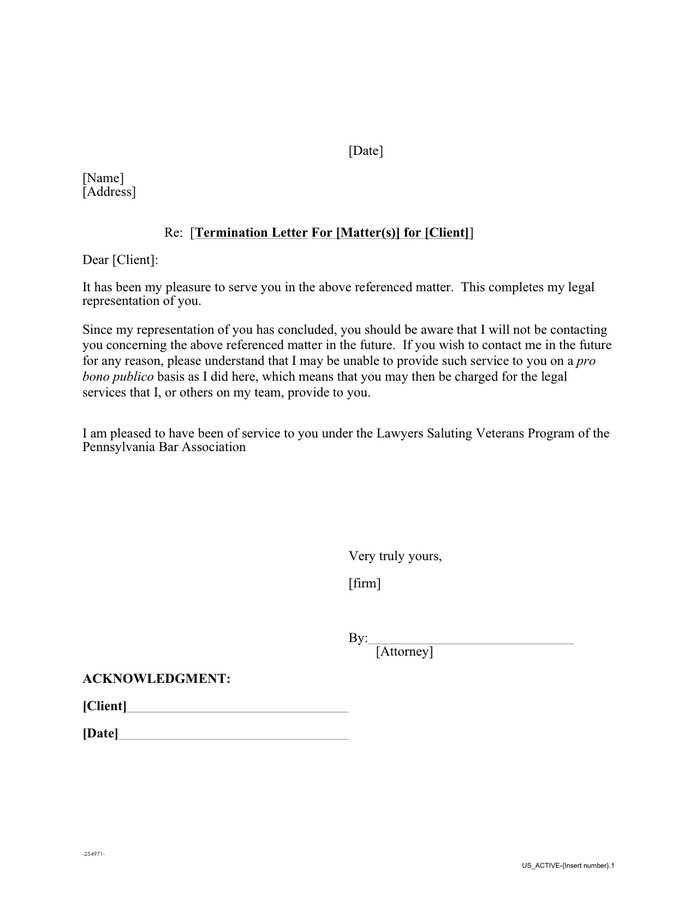
Conclude the letter by specifying clear actions the client should take. For instance, mention specific dates or deadlines for follow-up or important decisions. This keeps the focus on next steps and ensures the client knows exactly what to expect.
Call to Action
Encourage the client to reach out with any questions or clarifications. This can be phrased as an invitation for further discussion or a suggestion to confirm details in a follow-up meeting.
Outline the Next Steps
Summarize the actions that both parties will take moving forward. Outline any paperwork or agreements the client needs to sign, or clarify how to proceed with legal actions. Provide instructions for scheduling the next consultation, if necessary.
| Action | Deadline | Responsibility |
|---|---|---|
| Confirm details of the agreement | By [date] | Client |
| Schedule the next consultation | Within the next week | Both parties |
| Sign the necessary documents | By [date] | Client |
End with a polite reminder of your availability for further questions. Reassure the client that you are there to support them through the process. This ensures clarity and reinforces the professional relationship.
Formatting Guidelines for Legal Letters
Legal letters should be formatted with precision to maintain clarity and professionalism. Start with a clear header that includes the sender’s details, recipient’s name, and the date. This information sets the tone for the document and ensures the reader can easily identify its origin and context.
Clear and Consistent Structure
Use a standard business letter format, starting with a formal salutation. Address the recipient by their full title, such as “Dear Mr. Smith,” unless you have a well-established informal relationship. Follow this with a concise body that breaks down the information into paragraphs for readability. Each paragraph should focus on a single point to prevent confusion.
Professional Language and Tone
Use formal language throughout the letter. Avoid slang and contractions to maintain a serious tone. Keep the writing direct and to the point, avoiding unnecessary jargon or complex sentence structures that could hinder understanding. End the letter with a polite closing statement, such as “Sincerely,” followed by your name and title.
Always review the letter for accuracy, ensuring all details are correct and clearly presented. This includes verifying names, dates, and legal references to prevent any misunderstandings.